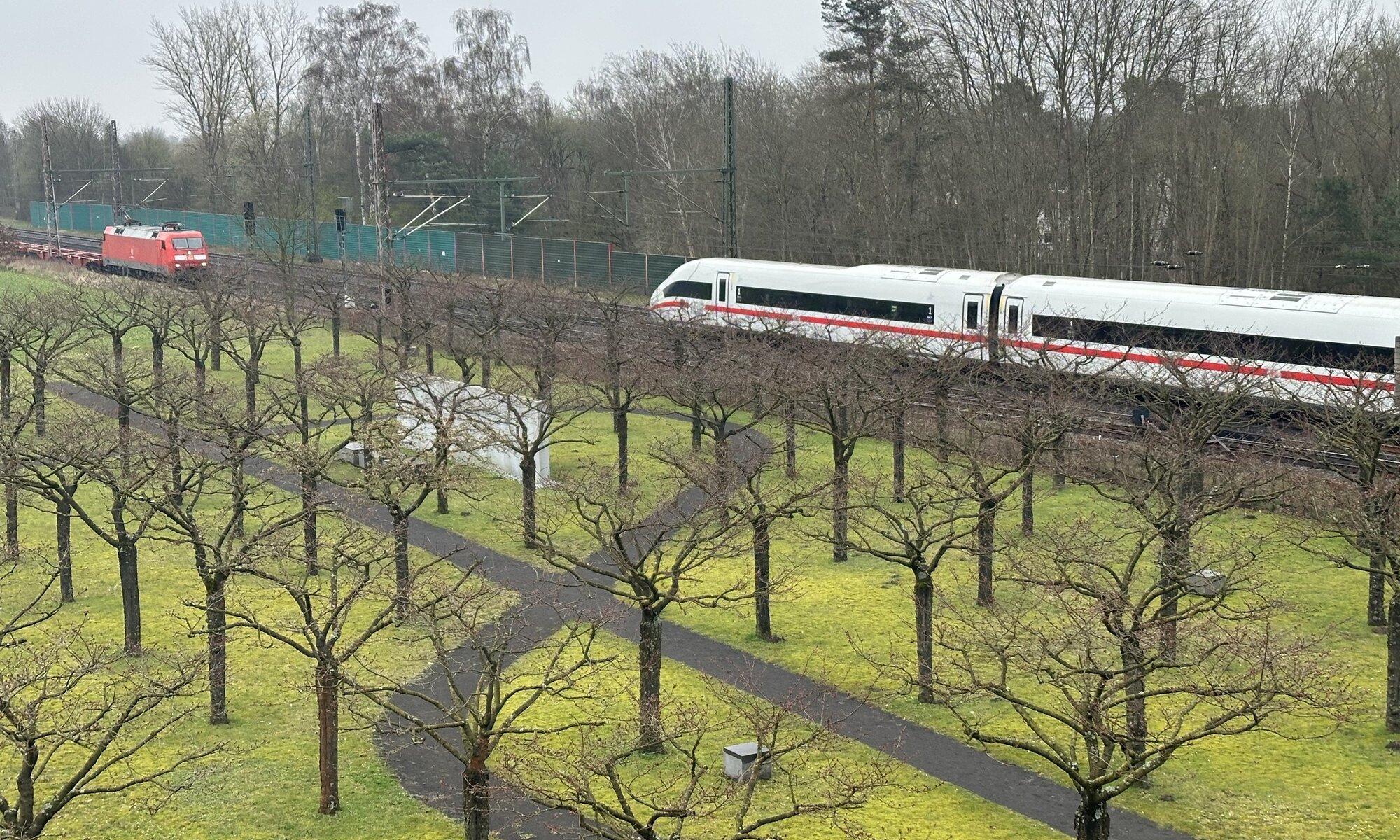I’ve been using high-speed trains in Germany very often and always felt secure. Travelling by train is one of the most secure means of transport and there are many technical measures that ensure this, including the European Train Control System (ETCS), dedicated allowances to use a railway track as well as automated braking the train if the train driver is not responding or the train too fast. When travelling by car you have a 164 times higher risk to get injured than in a train. But even a system like this can never be 100 % secure and we all had to learn that on June 3rd, 1998, when the most severe accident of European high-speed trains happened close to a small city in Lower Saxony.
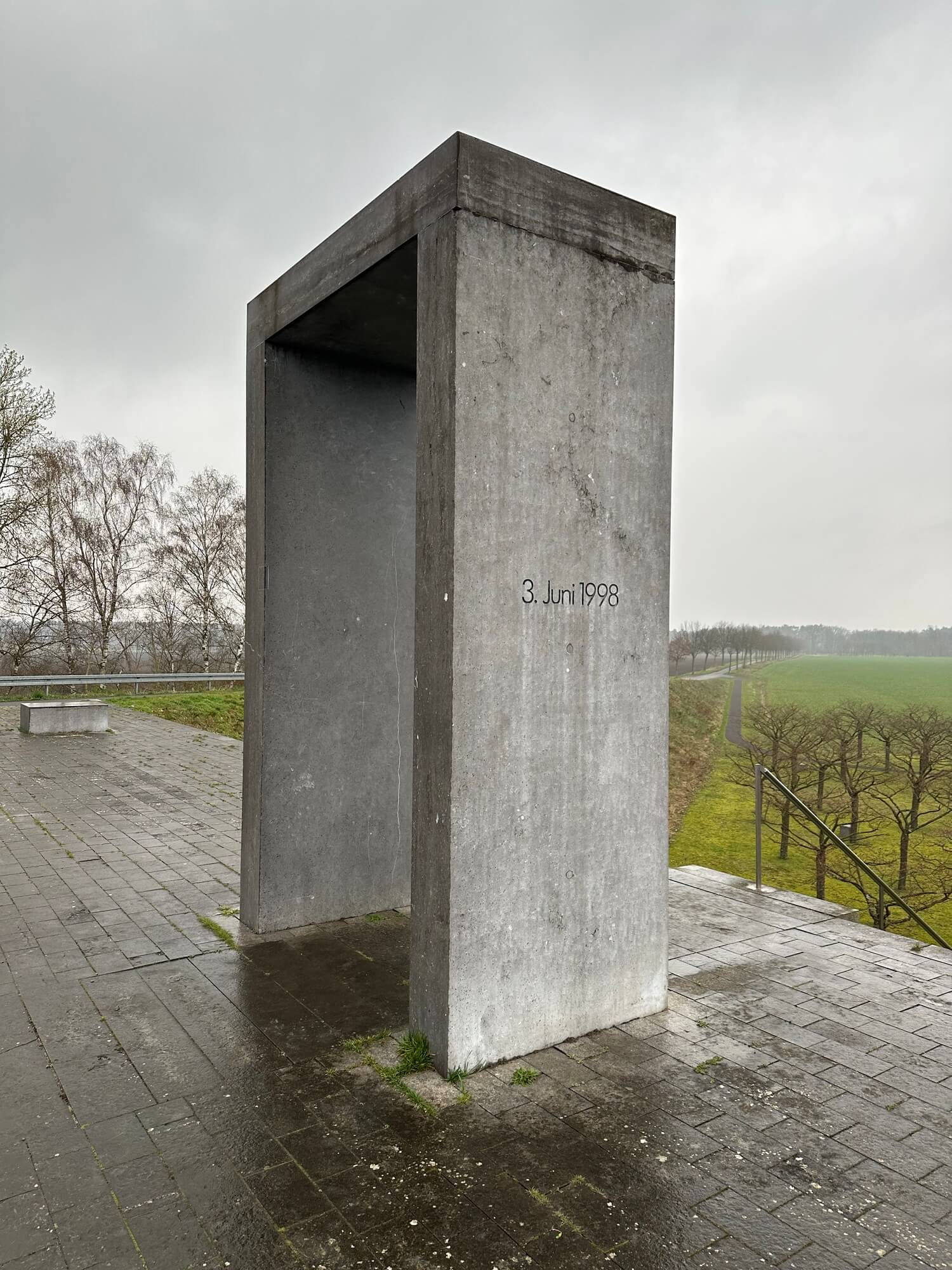
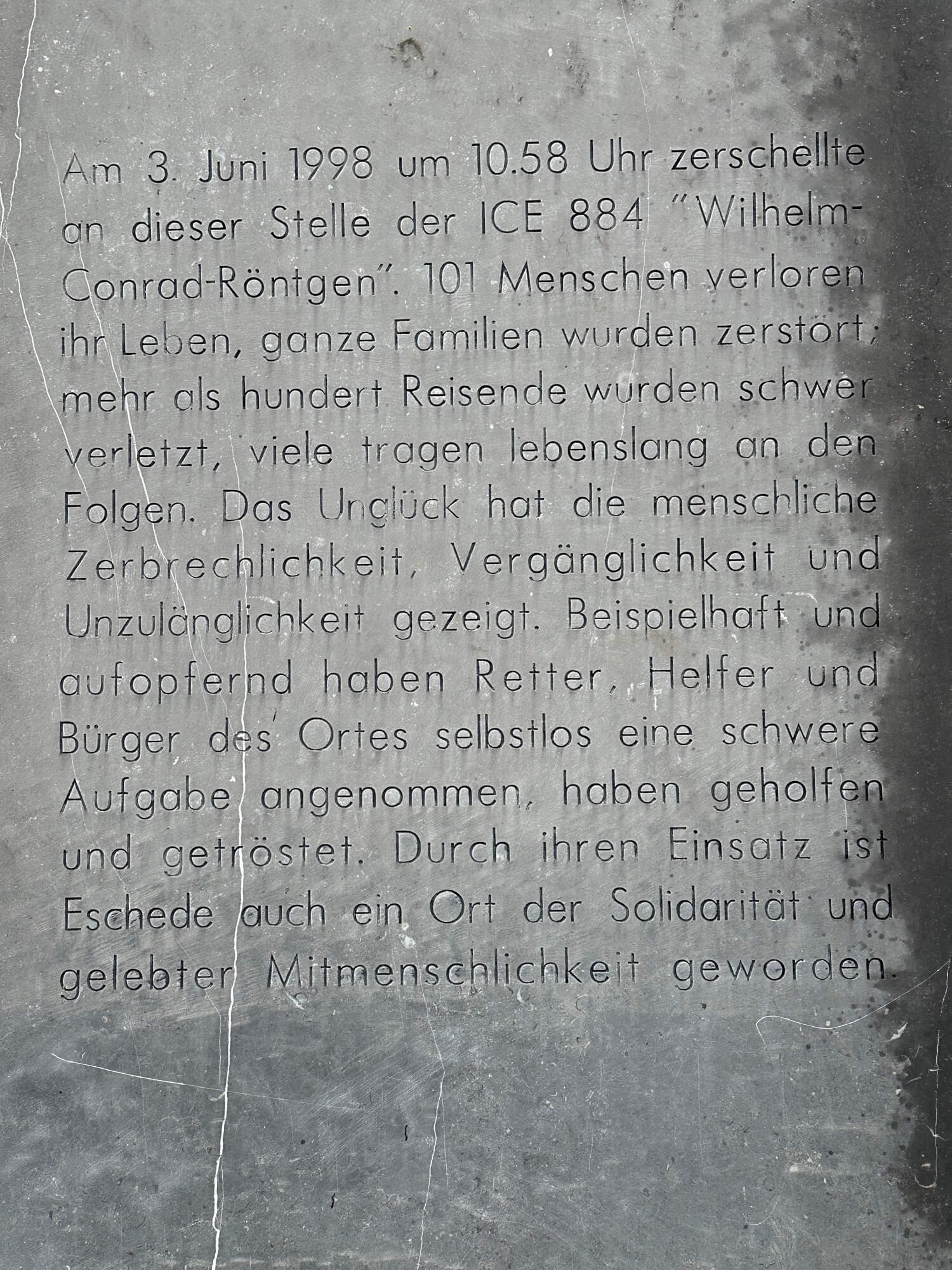
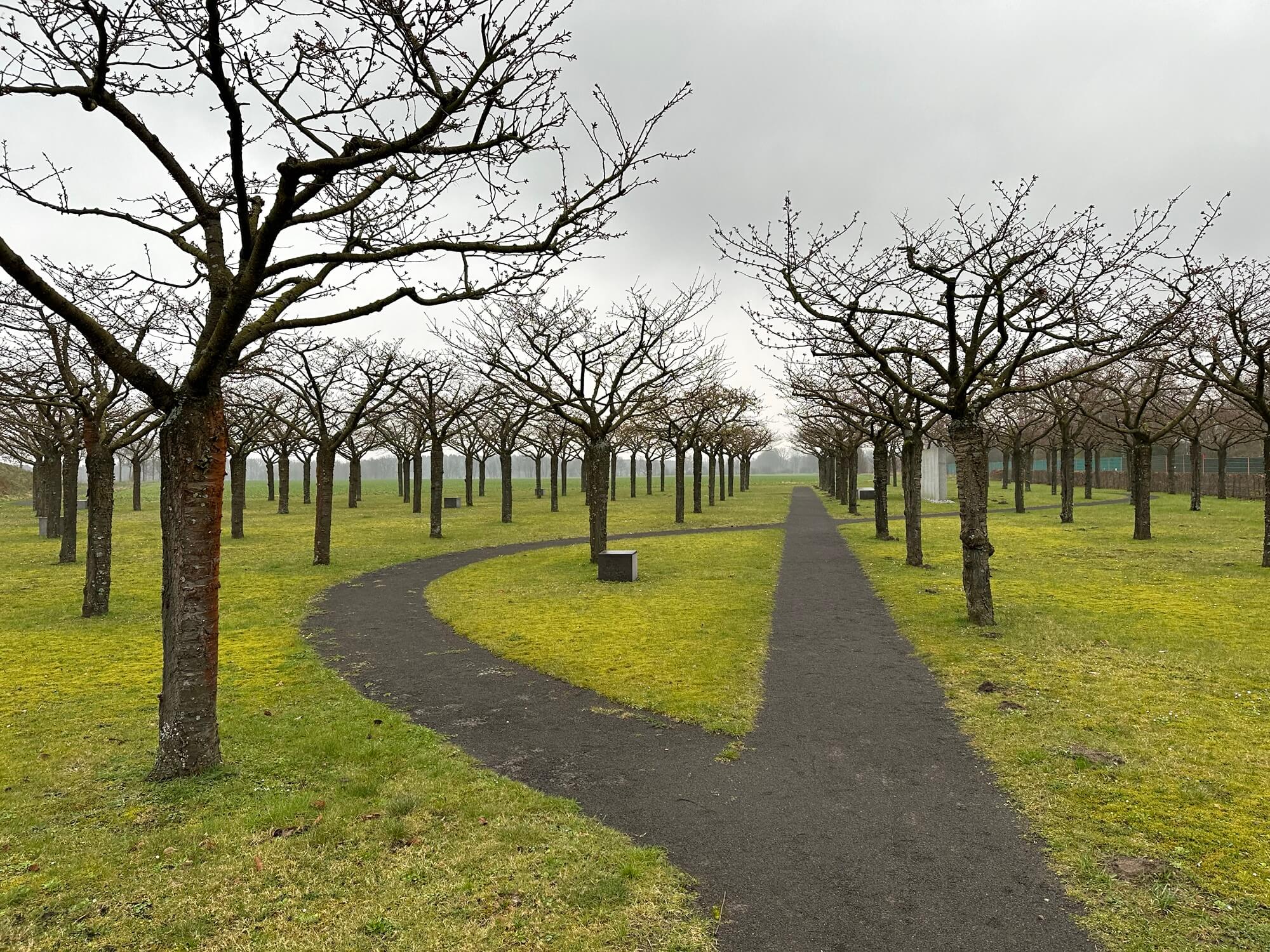
On that day the ICE 884 named ‘Wilhelm Conrad Röntgen‘ was travelling from München to Hamburg when close to the city of Eschede a wheel rim broke and shot into the passenger cabin between two seats. It still reached down to the railway tracks and destroyed a railway switch and then manipulated a second railway switch so that following parts of the train were lead onto a neighboring railway track – at the speed of 200 km/h. The coaches turned sideways, crashed into the pillars of a bridge which collapsed onto the train; they folded together like a folding rule. 101 persons died, more than 100 got injured. Immediately a large rescue operation started. Inhabitants of Eschede were the first to help, but firefighters, ambulances and soldiers also arrived fast; more than 1,000 were involved and heavy equipment was needed. It could have been even worse as the schedule had foreseen that another ICE train coming from Hamburg would have met ICE 884 at this position and at the point of accident – but that train was fortunately running a minute earlier.
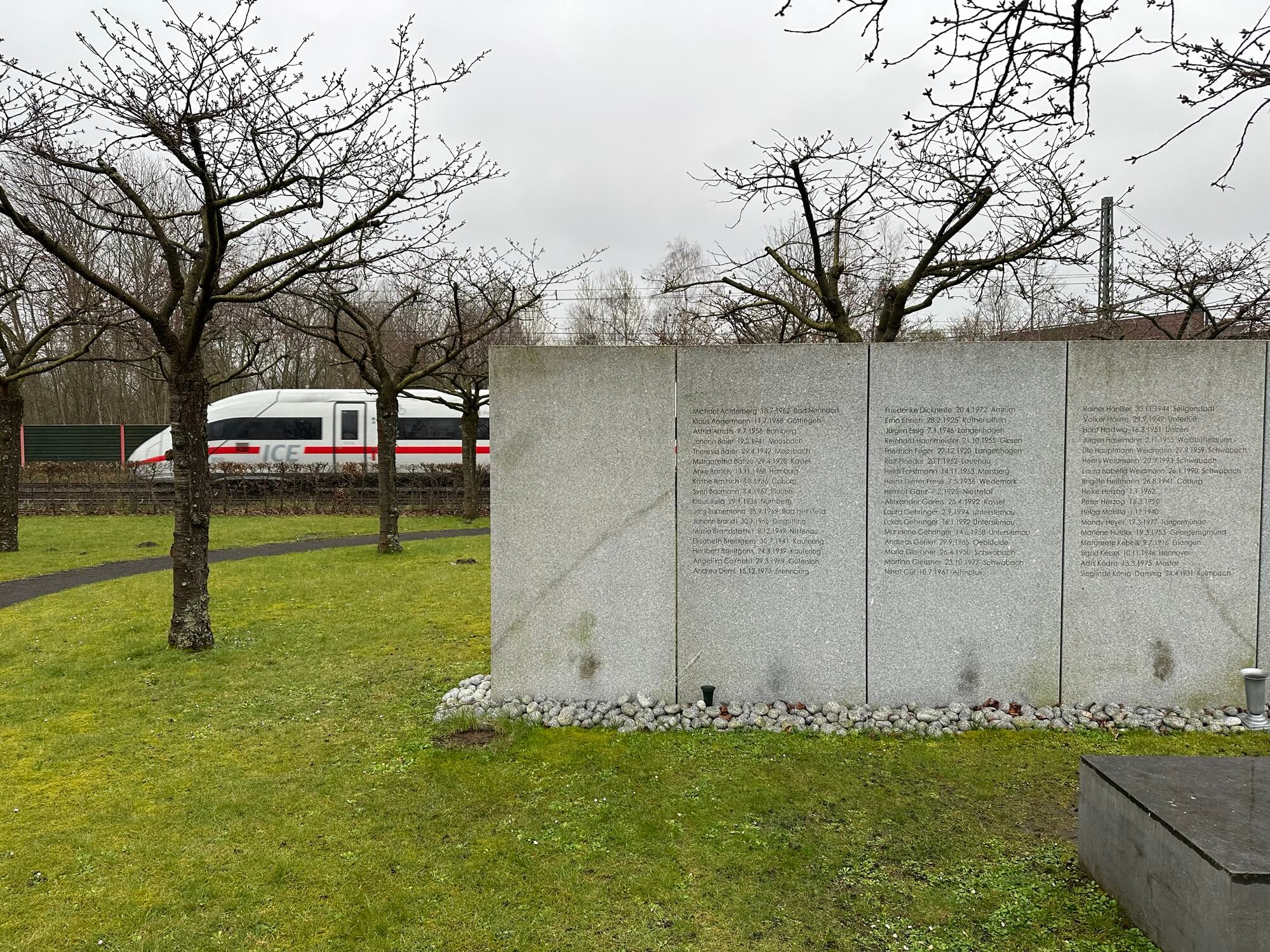
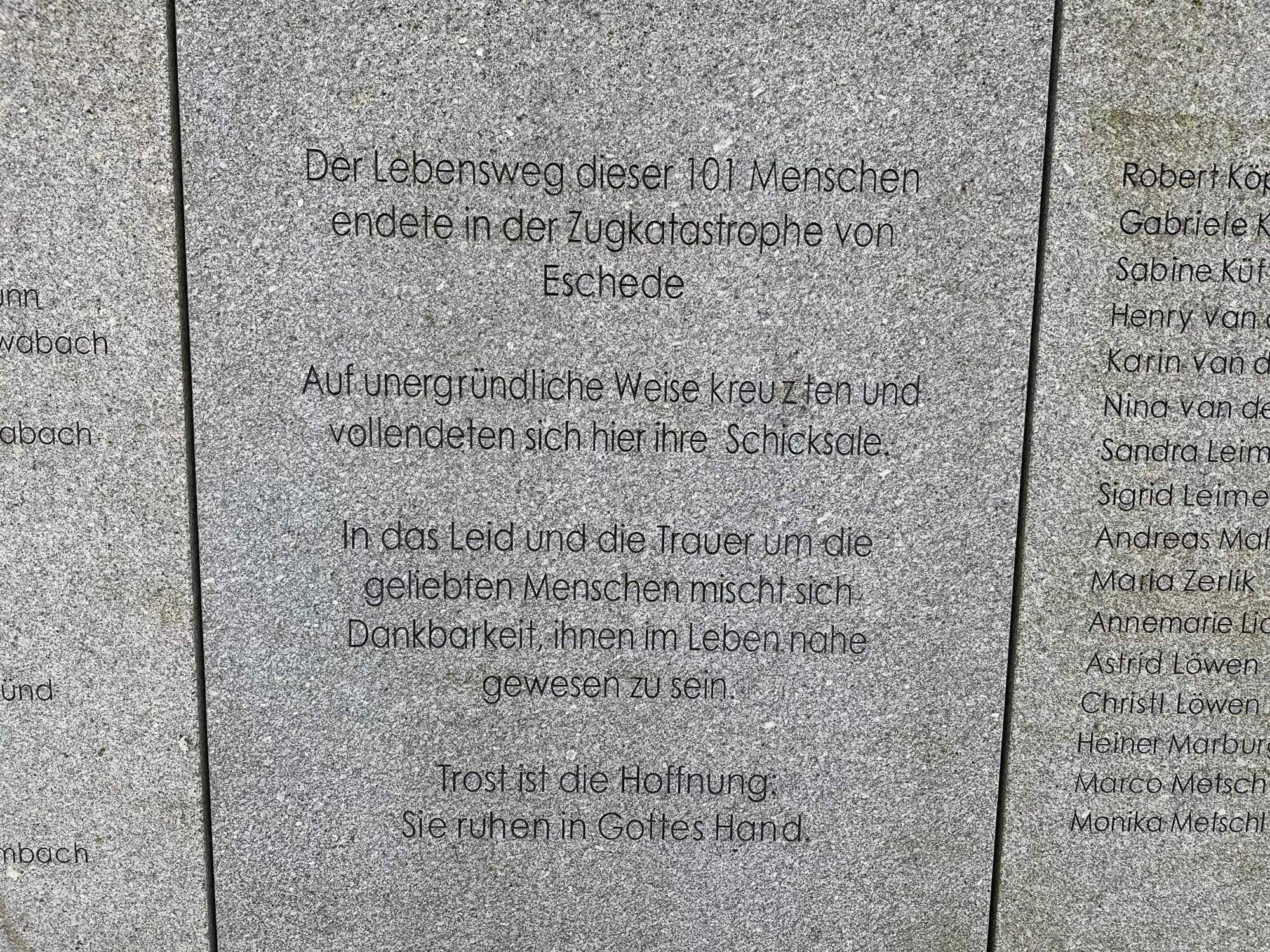
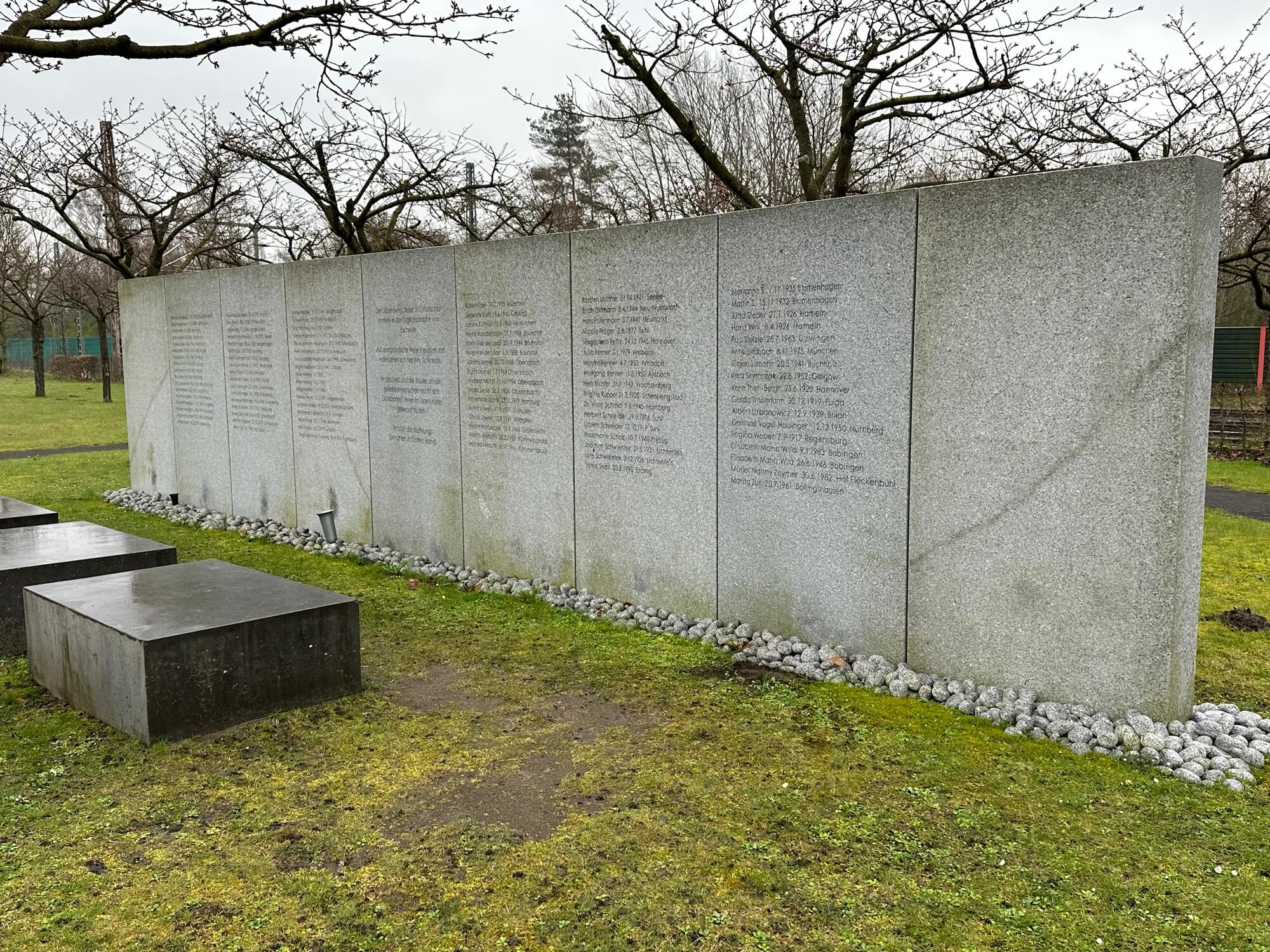
Some years upfront to the tragedy Deutsche Bahn had replaced the earlier monobloc wheels by multi-component wheels to improve comfort. Unfortunately the wheel rims degraded from the inside and this damage was not visible from the outside. After the Eschede accident the monobloc concept returned, wheel monitoring and maintenance was improved and the ICE trains received more emergency exits. The train network was evaluated and situations identified where railway switches exist directly in front of bridges. And the bridge at Eschede was rebuilt without pillars. Does this make traveling by train more secure? For sure. Will it give 100 % security in the future? Of course not. After the accident the train number was removed from the schedule, there is no ICE 884 anymore to not give travelers a bad feeling.
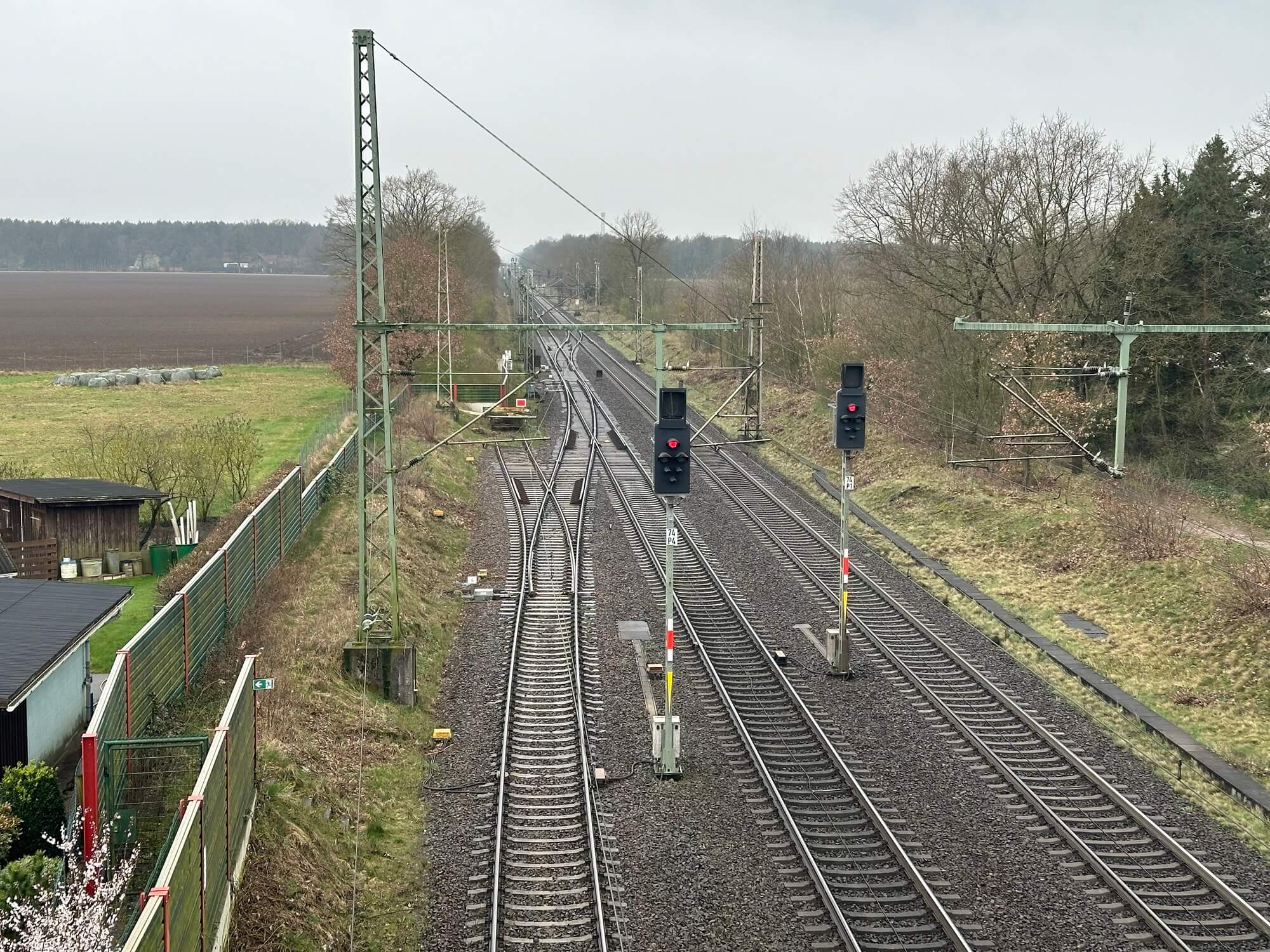
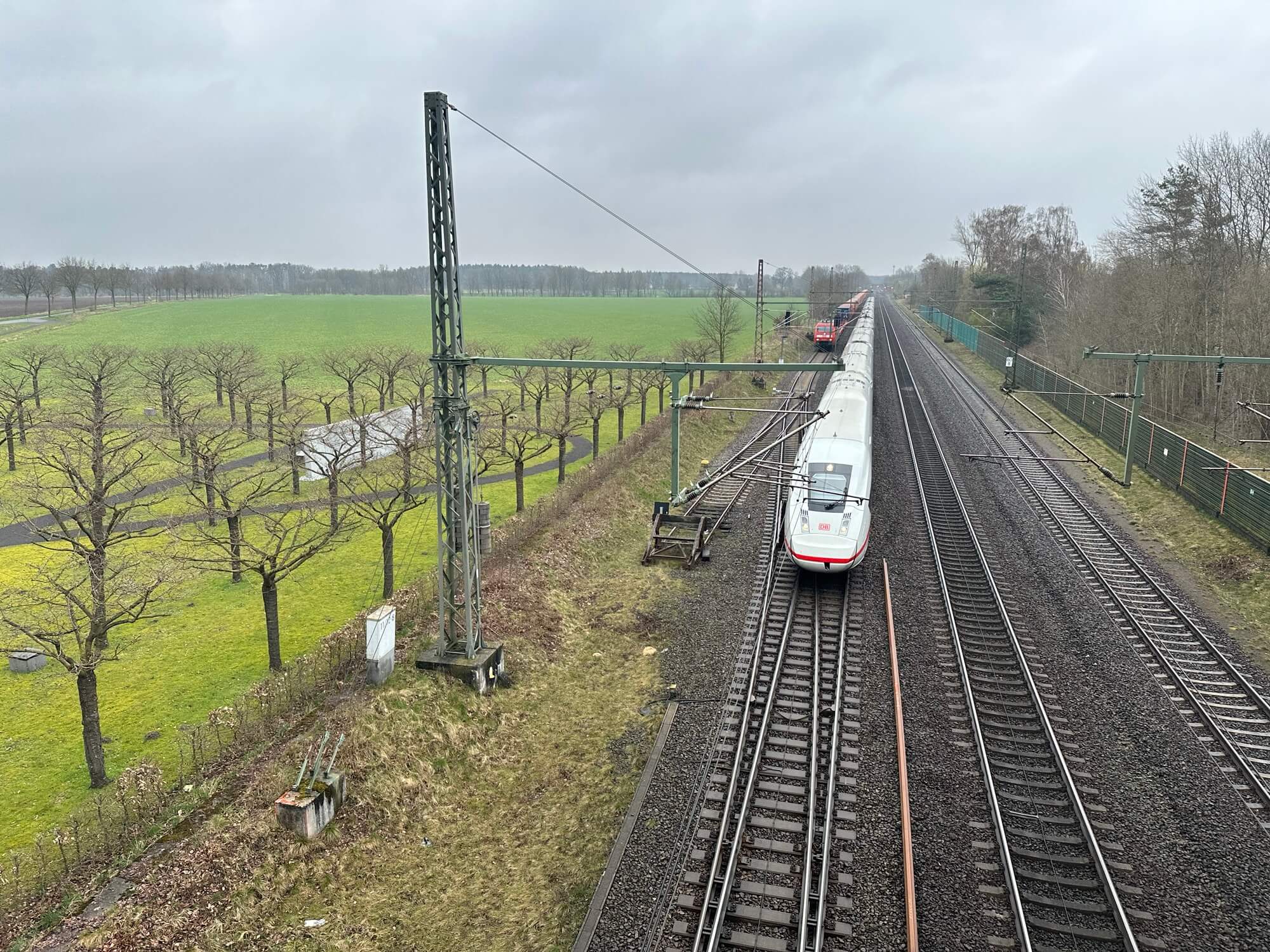
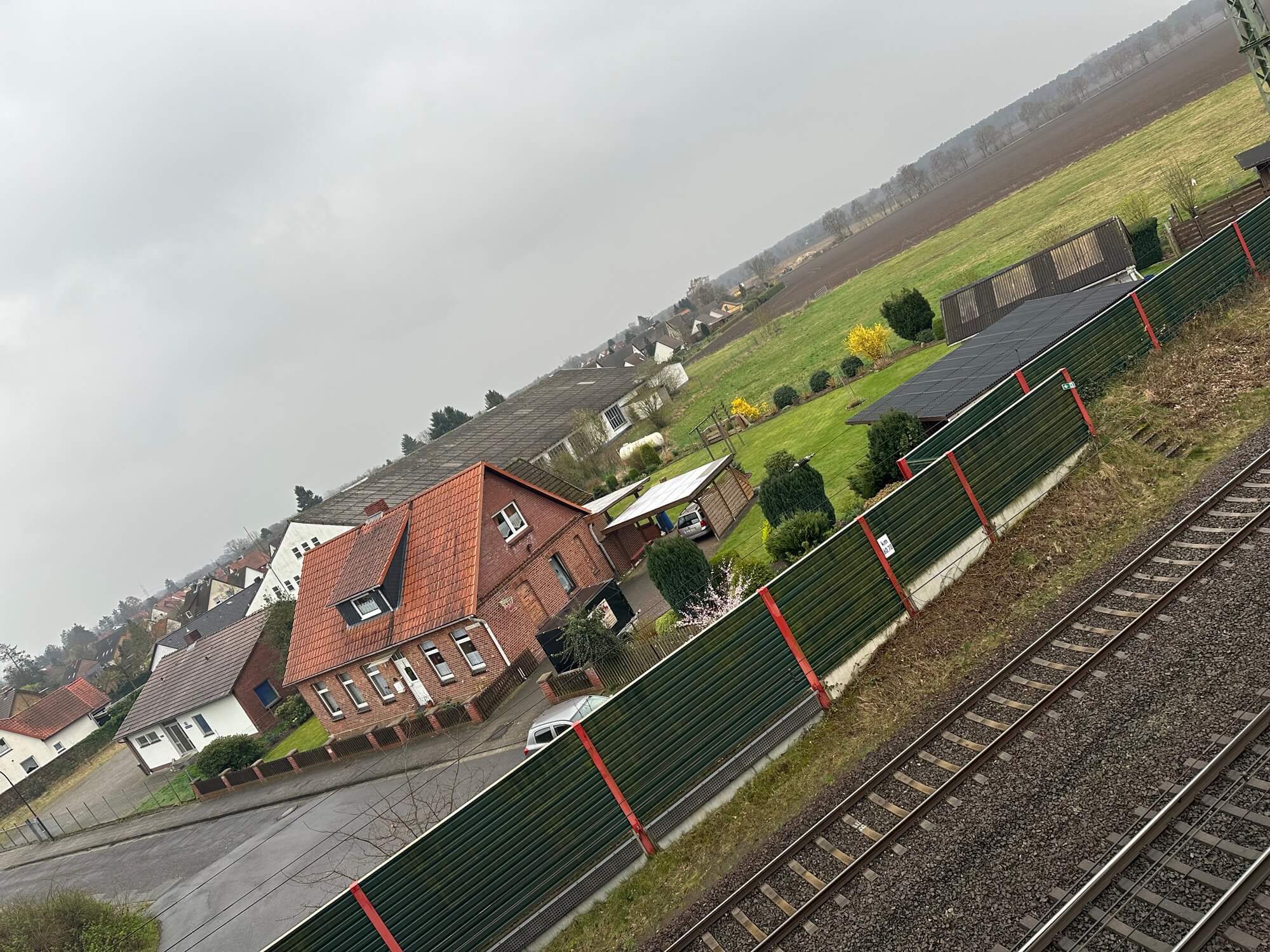
Nearly three years after the accident a memorial was inaugurated in the presence of relatives of the victims. The 101 that died are named on a commemorative wall, for each of them a cherry tree has been planted. Out of the garden a straight line leads up, through a gate and via steps into heaven. It is a very good memorial, a place to remember this tragedy, a place of dignity. The word ‘Eschede‘ is still today foremost connected to this tragedy and brings up negative emotions in many peoples heads. But I love the inscription that says that by the immediate help of the inhabitants of Eschede and the many rescue forces ‘Eschede‘ also became a synonym for solidarity and humanity. The Gedenkstätte can be reached on foot within 20 minutes from the railway station of Eschede.
Gedenkstätte
Eschede
Germany
Loading map...


